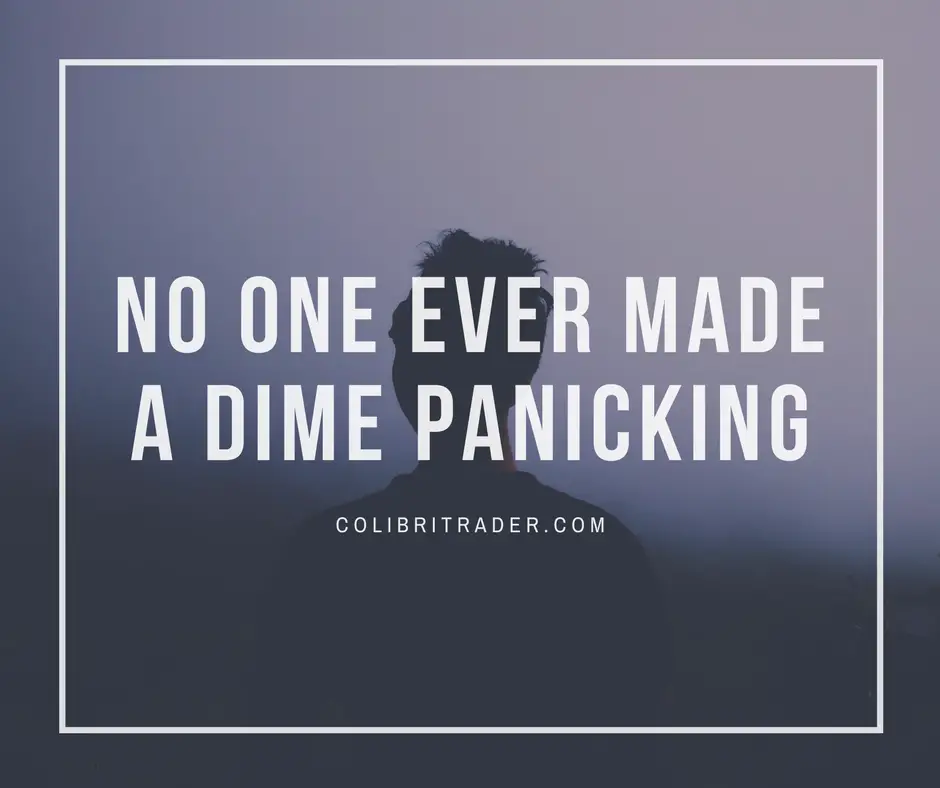This is a guest post by Christopher M. Uhl, CMA from 10minutestocktrader.com
If you’re an American looking to go on vacation and see the Eiffel tower, you’re in luck! That George Washington in your wallet can go a lot further than it used to. But if you’re tired of baguettes and looking for a burger on the American shores, well, those all beef patties are going to cost a little bit more than they used to.
With the Euro being down nearly 5% in just the last month, trading currencies has come to this trader’s mind. No matter if your opinion is that the Euro is finished, it’s going to zero or that we are going to see the Euro pivot and go to the moon, there’s an options trade that has the same probability of profit for either outcome. How can that be? This can be accomplished by selling an out of the money Put Spread or Call Spread.
Let’s take a look at this trade setup by using Guggenheim Currency Shares Euro Trust (FXE:NYSE Arca). FXE has had a 5% down move over the last month and that has elevated its Implied Volatility Rank to 94%. This means that the options prices for FXE in the 94th percentile for pricing, essentially the options are cheaper 94% of the time. This is an ideal setup for selling option premium.
One could buy a share of FXE, but it would only profit if it moves up. Similarly by short selling it, the investment would only profit if FXE moves down. Either way, you would have a 50/50 chance of profiting.
However, by selling the 109 Put and buying the 108 Put, the trade would have a probability of profit of approximately 77%. Or one could sell the 115 Call and buy the 116 Call and have a probability of profit of approximately 80%. No, I haven’t been drinking a discounted Bordeaux, these probabilities are historically based and in efficient, liquid markets, are very accurate.
The Delta of the 109 Put is 23 and the Delta of the 115 Call is 20. Delta is an approximation used for the percentage chance the strike will be in the money at expiration. When an option is sold, it requires the seller to pay the buyer the difference of the in the money strike price and the closing price of the security at expiration. However, if the option expires out of the money, the seller keeps the entire premium paid upfront by the buyer.
With the Delta of the 109 Put being 23, we can calculate the probability of profit as 100-23=77 or a 77% probability it will expire out of the money. And the same would be true of the 115 Call, 100-20=80.
So with either of these two trades, FXE can actually move up, down or nowhere at all and will gain in value as time passes until expiration and option prices go down. The closing price of FXE as of 5/29/18 was $110.77. The breakeven on the Put Spread is $108.79 which is the sold strike of 109 minus the 21 cents of credit collected when placing the trade. And the breakeven on the Call Spread is $115.11 which is the sold Call strike of 115 plus the 11 cents of credit.
By selling options, we are greatly improving our probability of profit but limiting the total profit potential. However, these trades require less than $100 in buying power and can return as much as 21% return on capital in only 51 days if the Put Spread were to expire out of the money.
So whether you’re bullish on baguettes or bearish on Brussels, there’s a high probability options trade to fit any size portfolio.
The contributor for this post is Christopher M. Uhl, CMA you can see more of his work at: 10minutestocktrader.com
